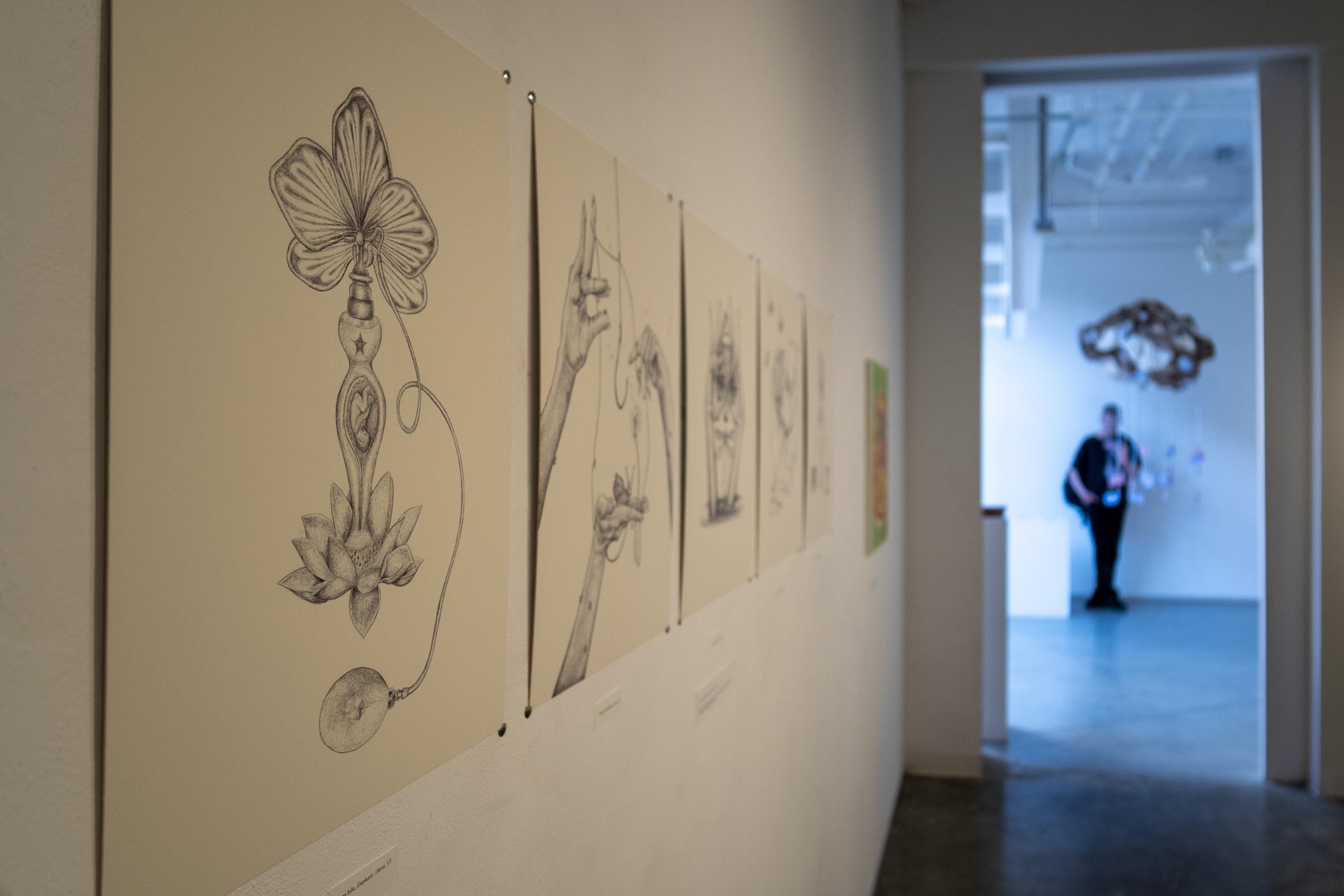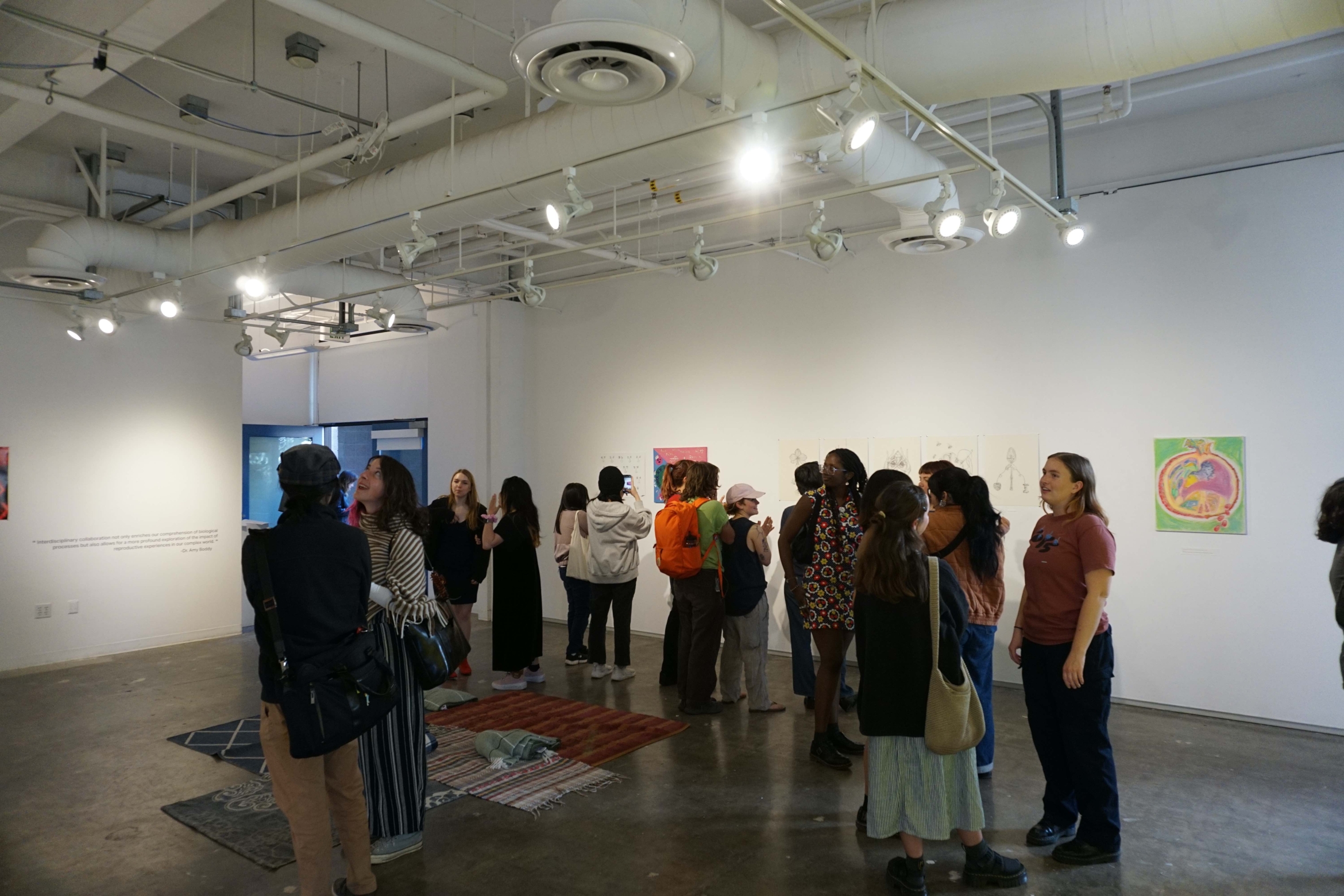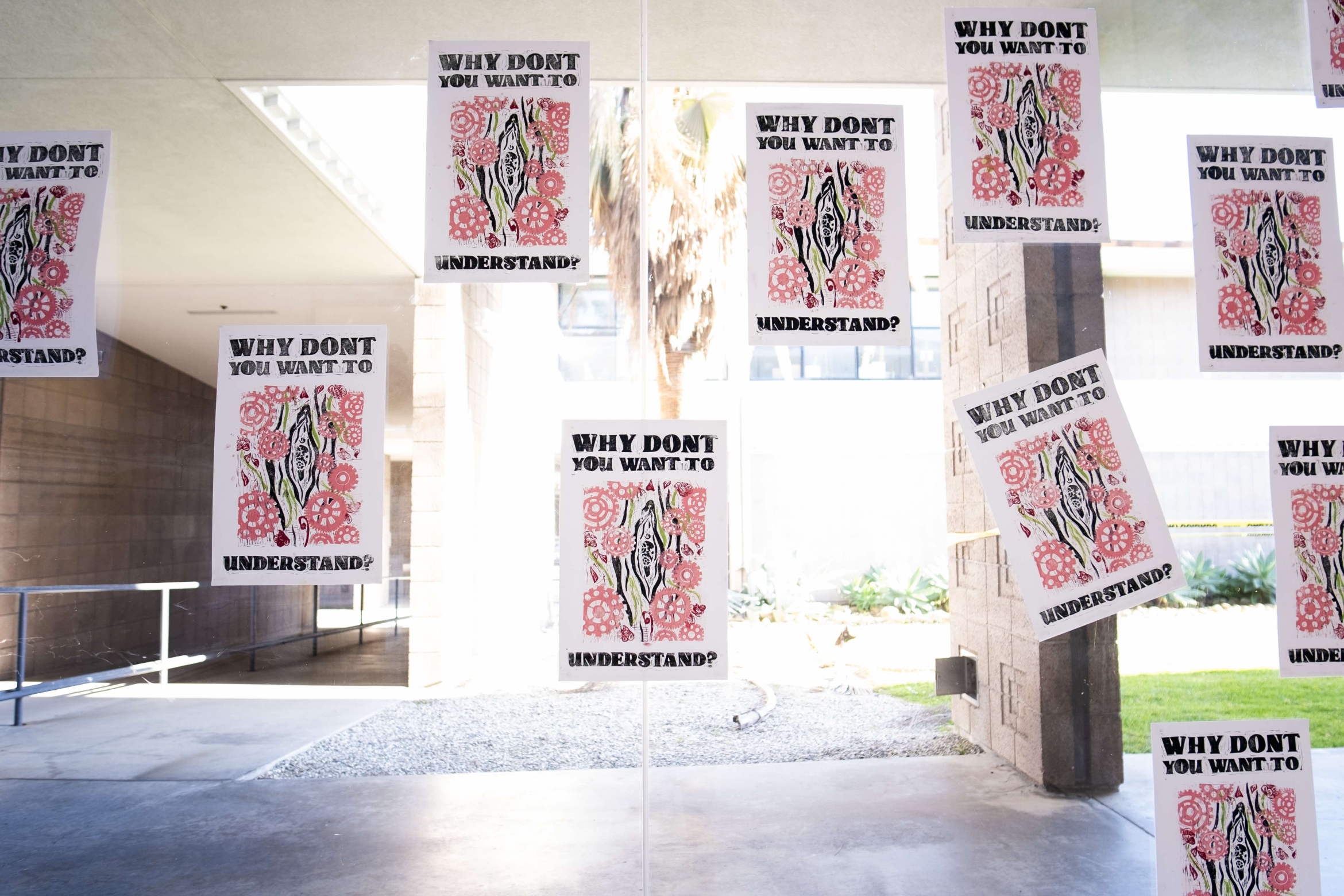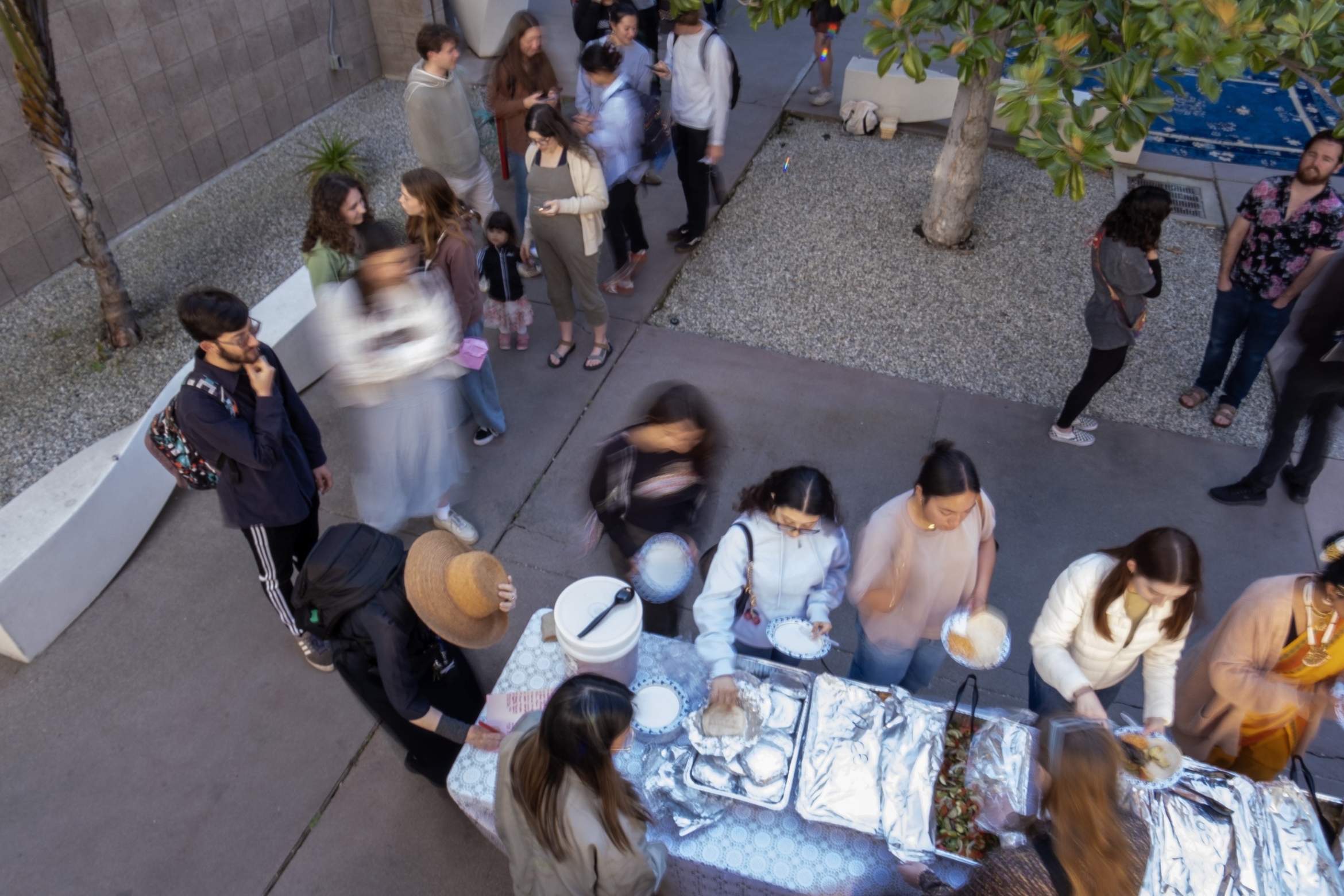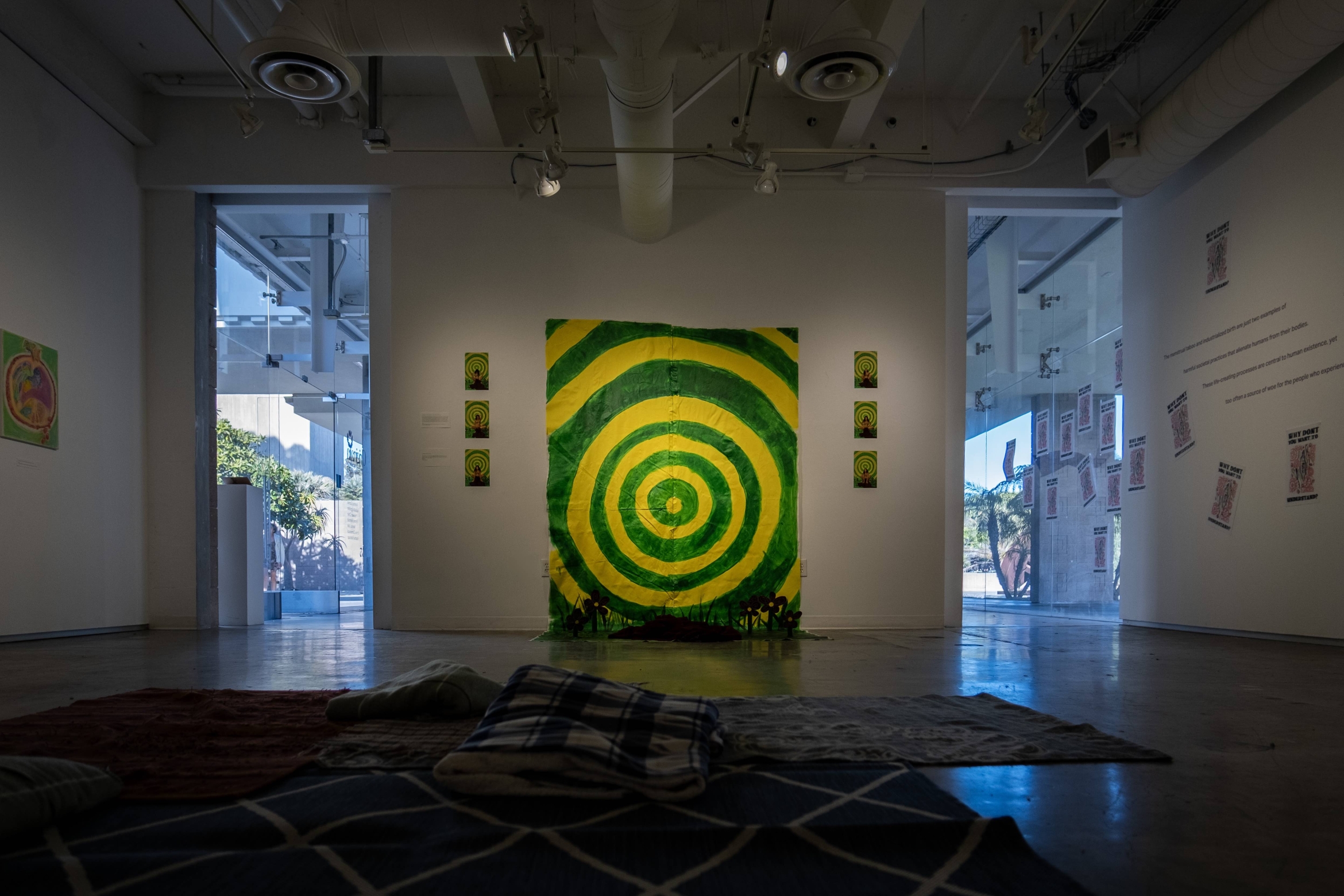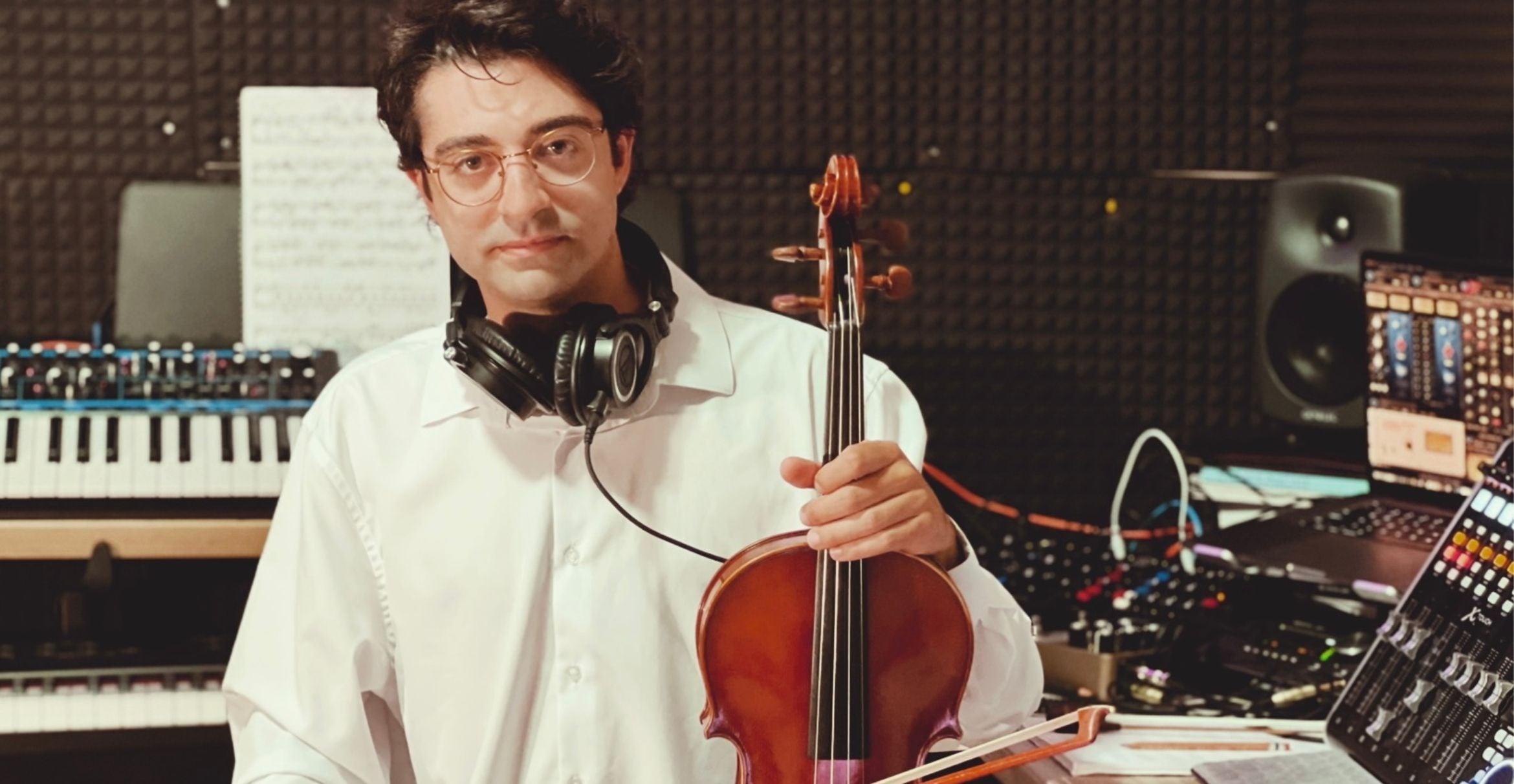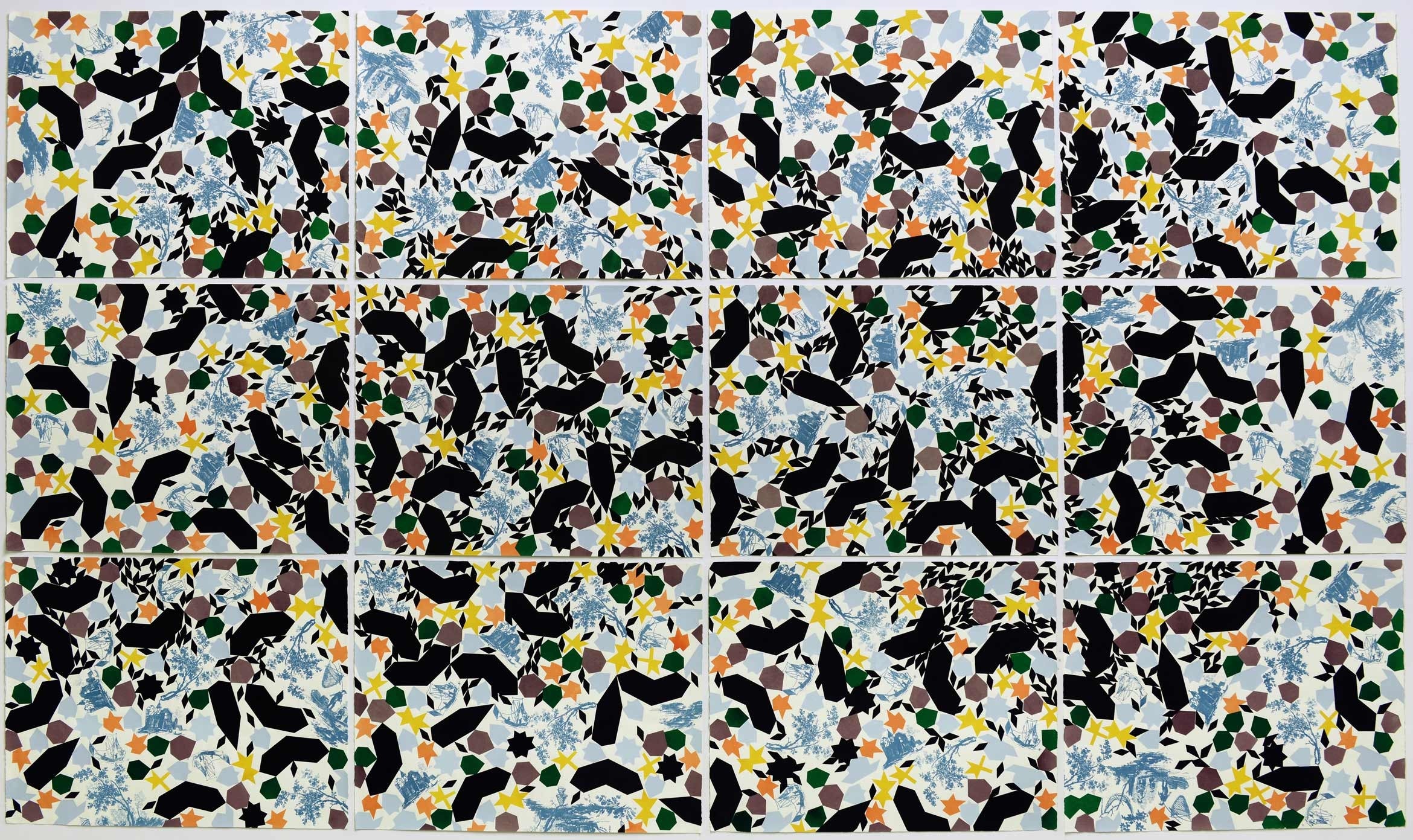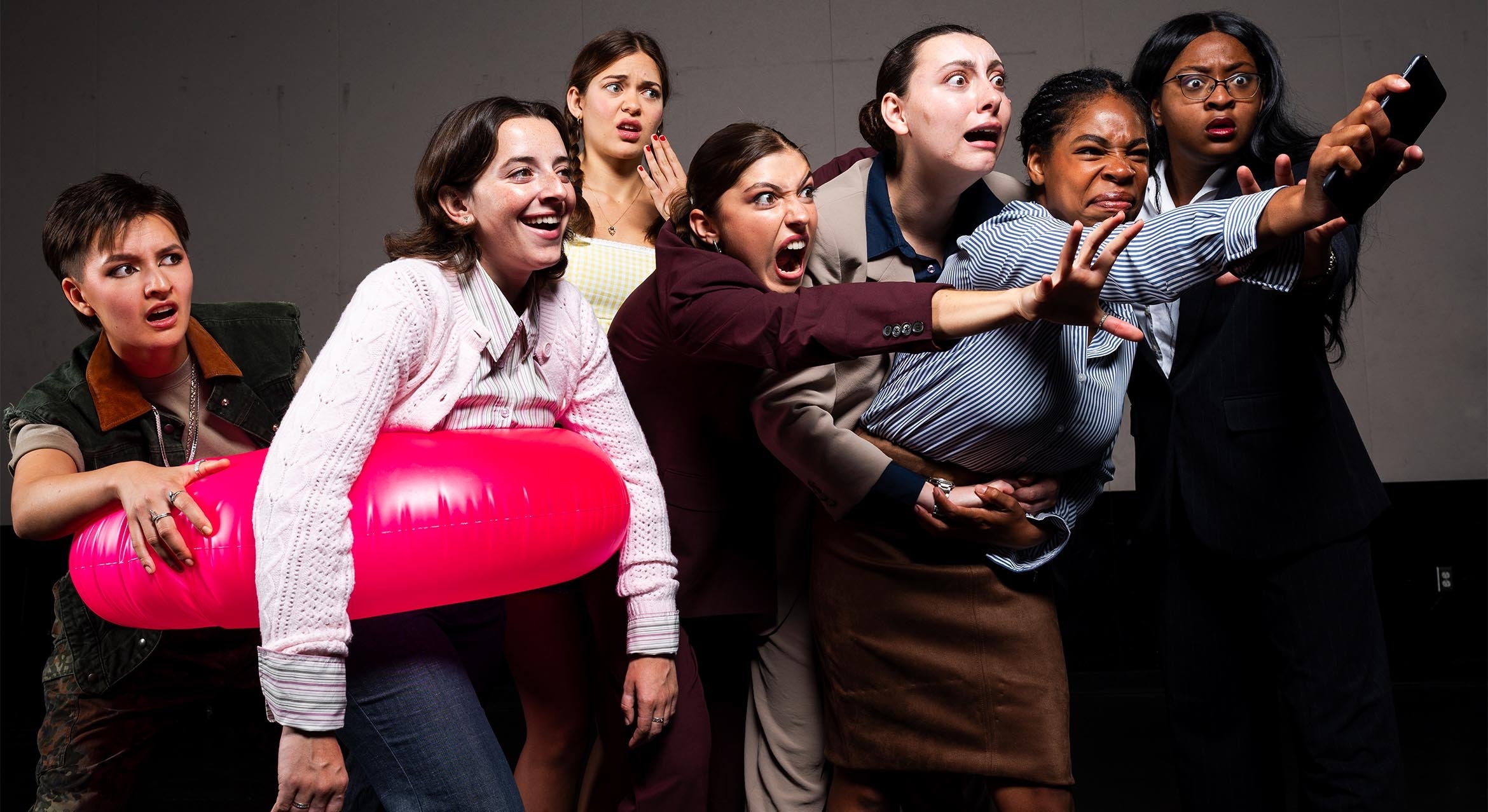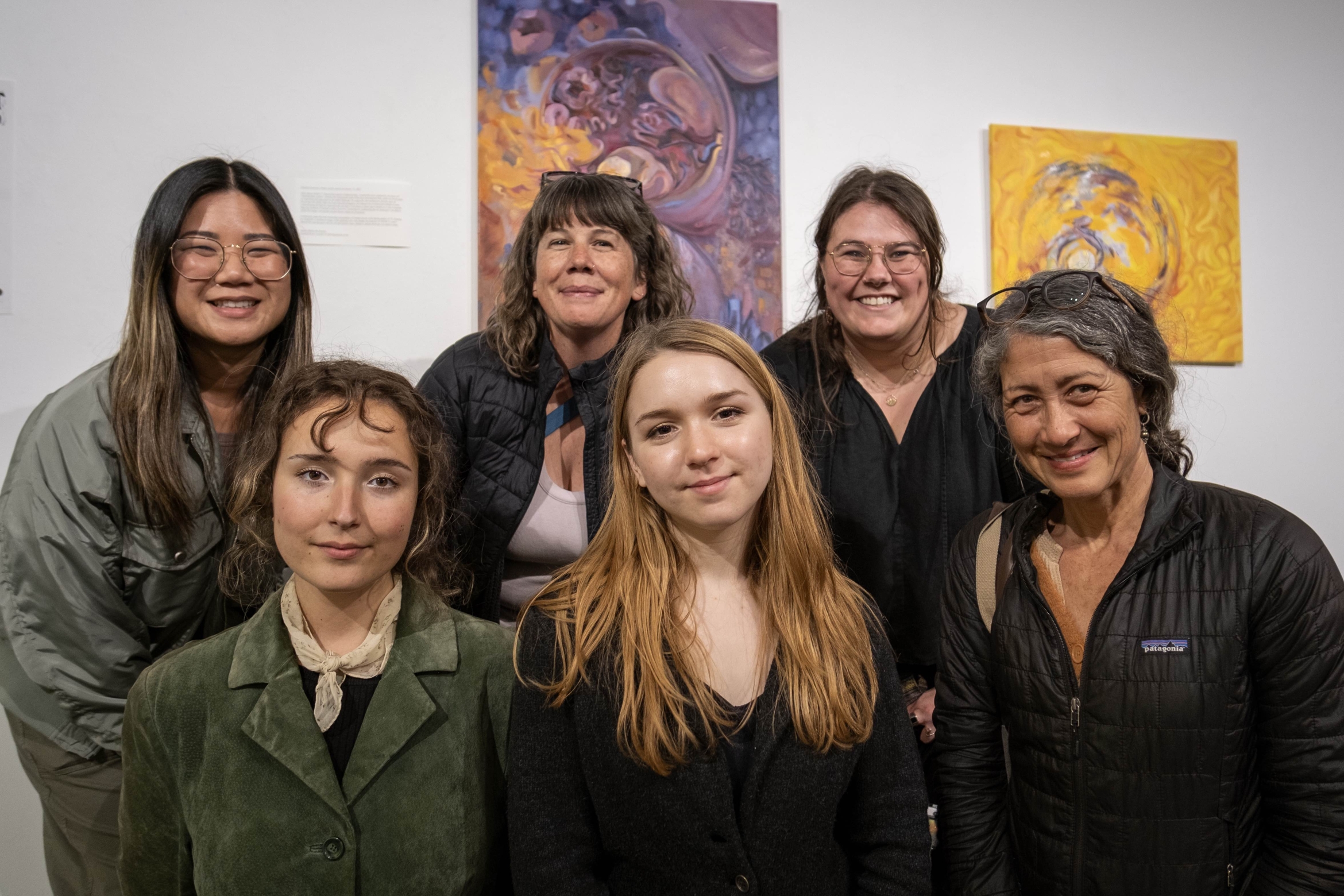
The seat of human life, a reproductive system that includes the uterus, ovaries, cervix, vagina and vulva, is often shrouded in mystery, subjected to regulation, or seen as an anchor for social and cultural practices. But for the UC Santa Barbara students who showed at the recent “Originalia” art exhibit at the Glassbox Gallery on campus, the human reproductive system is celebrated, investigated, acknowledged and demystified. Eleven students presented works diverse in media and mode, synthesizing the results of interdisciplinary collaborations and mentorships between the arts and sciences.
“Originalia” will reappear in a collaborative showcase event, on Wed. June 5, from 3-5 p.m., in Library Instruction and Training Room 1312.
“This whole effort is bringing together so many parts of campus,” said art Professor Kim Yasuda, who with anthropology Professor Amy Boddy advised the student facilitators in their effort to merge scientific instruction with artistic expression. “We have science in art right now, and that doesn’t happen often.”
The works presented by the group explored the many facets of human reproduction, ranging from the transition to a fertile, reproductive state signaled by menarche, to the physical negotiations between gestator and fetus during pregnancy and childbirth, to birth control, motherhood, the role of community connected to hormones and cognition, and the multilayered meanings of existing with female anatomy.
“I had just taught a reproductive biology class,” Boddy said of the show’s beginnings, born from the creativity sparked by the encouragement she gave students interested in studying the human reproductive system. “And they were like, ‘we want to do more.’”
Undergraduates Anastasia Senavsky (art and biological anthropology) and Emilie Risha (biological anthropology) designed a class to facilitate multimodal, passion-based learning, merging the departments of art and anthropology.
“I think that art contributes to a greater understanding of the scientific concepts of reproduction than traditional reading or writing,” Risha said. She and Senavsky, supported by Boddy, Kristine Chua, a postdoctoral fellow in the Boddy Lab, and Hannah Frogge, connected students with mentors and peers, bridging the conceptual and physical divides on campus that separate art and science. What started as an academic and artistic experiment quickly bloomed into a full-blown art show.
“I think students crave mentorship,” noted Senavsky, who delighted in the expansion of inquiry and creation that came from increasing access to information often bound behind departmental doors. With most of the featured artists stemming from an academic background in art, increasing their access to scholars in STEM, whose focus is on reproductive biology, was not only a pivotal part of the class but an opportunity for artists to integrate inquisitive, passion-centered research into their art practice.
Helping students dip their toes — or dive — into different aspects of expression was one of the perks of the job, according to mentor Chua. For one student, an artist, Chua provided scientific knowledge, while for the other, a scientist, she encouraged cultural perspective. “This initiative served as a platform for us to empower students to foster cross-campus collaborations and generate diversity of thought,” she said.
Sonia Fernandez
Senior Science Writer
(805) 893-4765
sonia.fernandez@ucsb.edu
